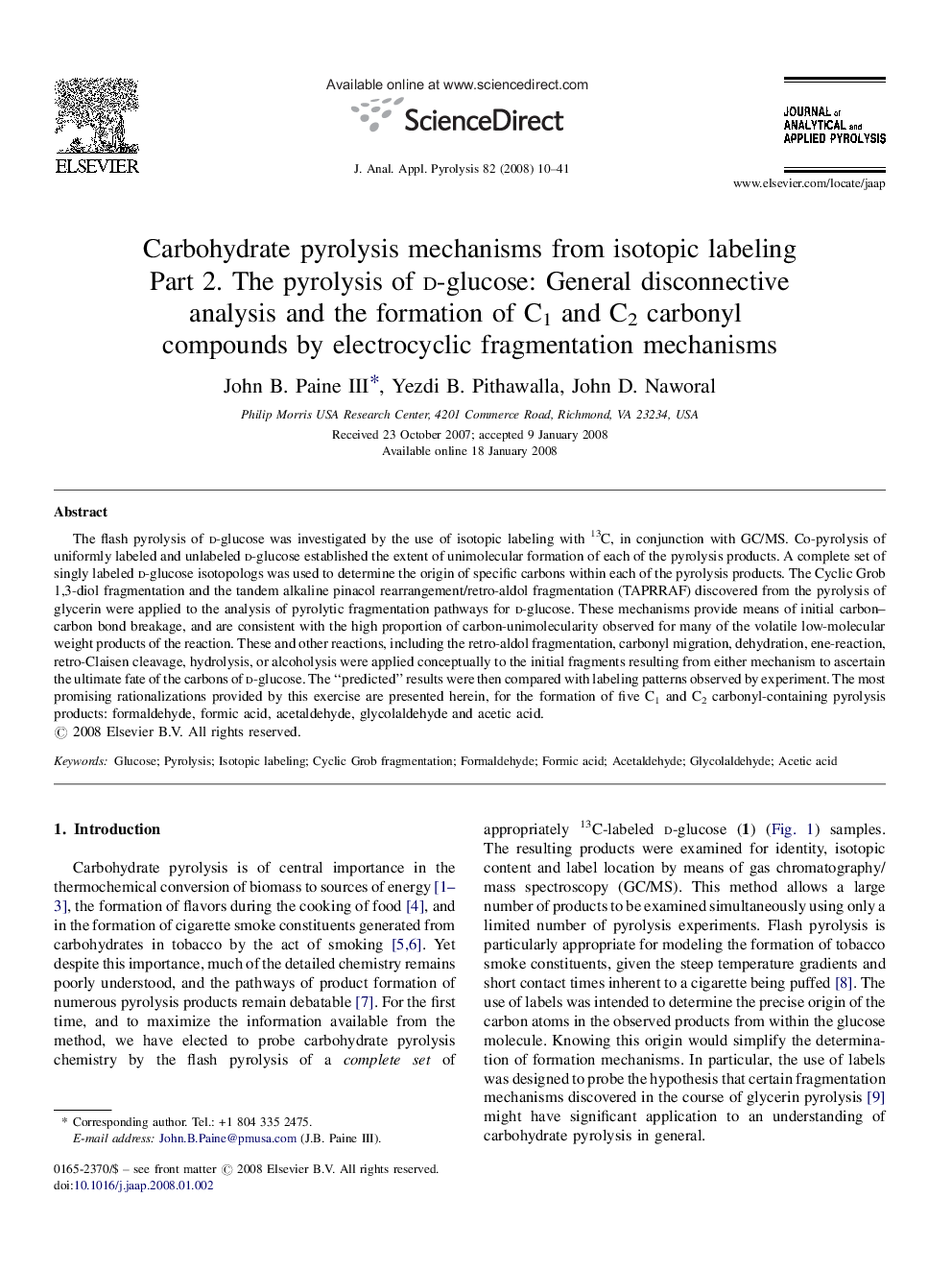| Article ID | Journal | Published Year | Pages | File Type |
|---|---|---|---|---|
| 1197686 | Journal of Analytical and Applied Pyrolysis | 2008 | 32 Pages |
The flash pyrolysis of d-glucose was investigated by the use of isotopic labeling with 13C, in conjunction with GC/MS. Co-pyrolysis of uniformly labeled and unlabeled d-glucose established the extent of unimolecular formation of each of the pyrolysis products. A complete set of singly labeled d-glucose isotopologs was used to determine the origin of specific carbons within each of the pyrolysis products. The Cyclic Grob 1,3-diol fragmentation and the tandem alkaline pinacol rearrangement/retro-aldol fragmentation (TAPRRAF) discovered from the pyrolysis of glycerin were applied to the analysis of pyrolytic fragmentation pathways for d-glucose. These mechanisms provide means of initial carbon–carbon bond breakage, and are consistent with the high proportion of carbon-unimolecularity observed for many of the volatile low-molecular weight products of the reaction. These and other reactions, including the retro-aldol fragmentation, carbonyl migration, dehydration, ene-reaction, retro-Claisen cleavage, hydrolysis, or alcoholysis were applied conceptually to the initial fragments resulting from either mechanism to ascertain the ultimate fate of the carbons of d-glucose. The “predicted” results were then compared with labeling patterns observed by experiment. The most promising rationalizations provided by this exercise are presented herein, for the formation of five C1 and C2 carbonyl-containing pyrolysis products: formaldehyde, formic acid, acetaldehyde, glycolaldehyde and acetic acid.
